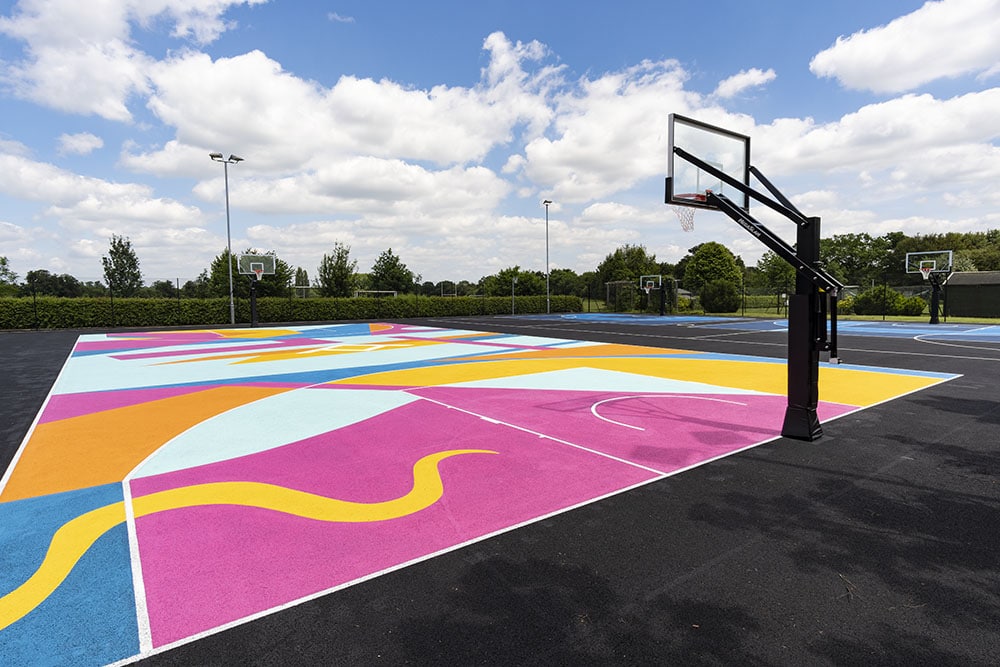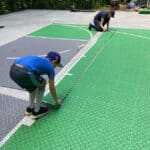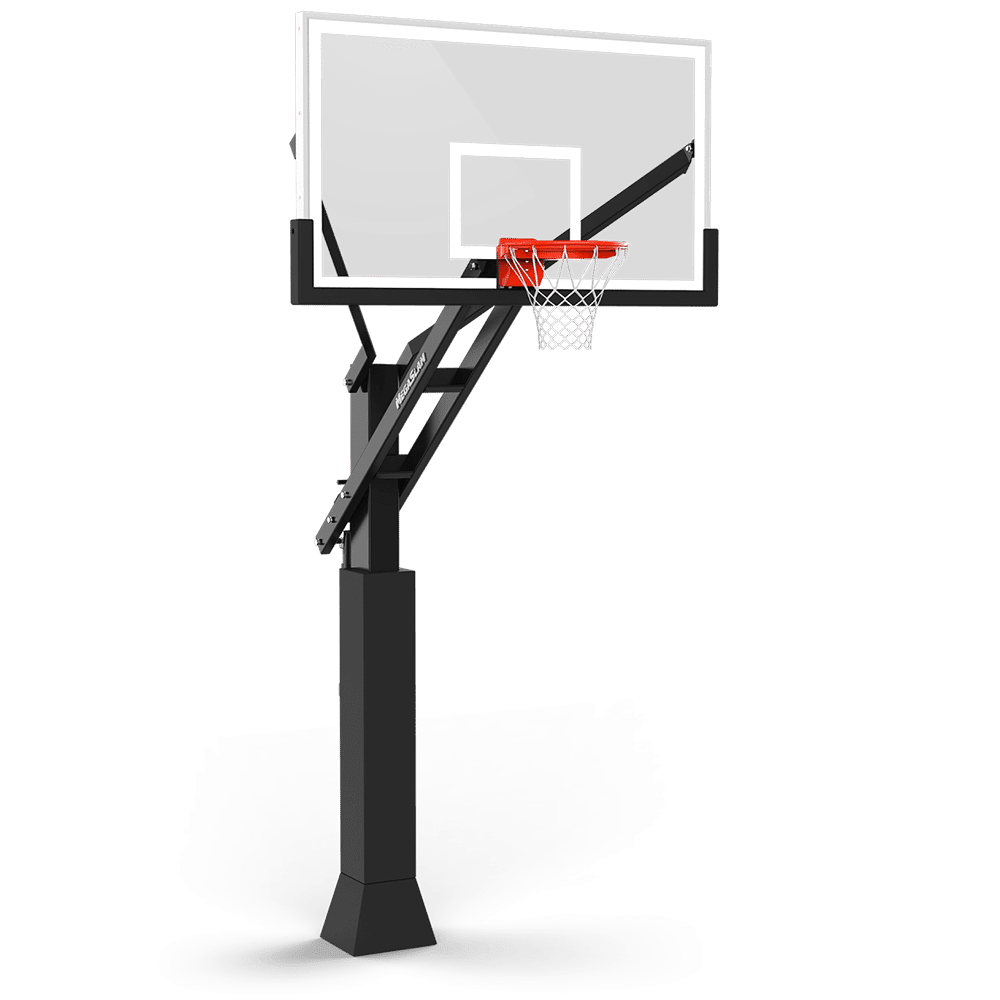Introduction
Basketball is an immensely popular sport worldwide, and educational institutions across Europe are increasingly recognizing its importance in fostering physical activity, teamwork, and overall student development. To facilitate the growth of basketball programs in schools, colleges, and universities, selecting the right basketball hoops is crucial. In this blog post, we will explore the key factors to consider when choosing basketball hoops. Whether you’re a sports coordinator, educator, or decision-maker in the education sector, this guide will help you make informed decisions about basketball hoops for your institution.
Understanding the Types of Basketball Hoops
Basketball hoops come in three main types; in-ground, portable and wall mounted.
In-ground Basketball Hoops:
In-ground or Fixed basketball hoops are permanent installations that are securely mounted to the ground. They offer stability and durability, making them a popular choice for outdoor basketball courts in educational institutions. Here are some key considerations:
a) Pole Design: Look for basketball hoops with sturdy poles, or main columns made of high-quality materials, preferably galvanised steel. The pole should be properly anchored into the ground to provide stability and minimize vibrations during play.
b) Backboard Options: Fixed hoops often feature larger, regulation-sized backboards made of materials like tempered glass or acrylic. Tempered glass offers excellent rebounding properties and a professional look and feel, while acrylic is more affordable.
c) Rim Types: Choose a rim that suits the skill level and intended use. Standard rims are suitable for recreational play, while breakaway rims offer additional flexibility and reduce the risk of injury during aggressive play, particularly beneficial when players plan to dunk.
Portable Basketball Hoops:
Portable basketball hoops are versatile as they can be easily moved and stored. They are an ideal choice for multi-purpose spaces and institutions with limited outdoor space. Consider the following aspects when selecting a portable hoop:
a) Base Stability: Look for a base with a wide footprint and a heavy-duty construction to ensure stability during gameplay. Fillable bases with sand or water provide added stability, and wheels allow for easy transportation.
b) Height Adjustability: Opt for portable hoops with adjustable height mechanisms. This feature allows the hoop to be adjusted to different levels, accommodating players of varying ages and skill levels.
c) Portability: Consider the weight and manoeuvrability of the hoop. Look for features such as folding mechanisms or compact designs that facilitate easy storage and transportation.
Wall-Mounted Basketball Hoops:
Wall-mounted basketball hoops are an excellent option for institutions with limited space or indoor facilities. Here are important factors to consider when selecting a wall-mounted hoop:
a) Wall Compatibility: Ensure that the wall is structurally sound and suitable for mounting a basketball hoop. Concrete or brick walls are generally recommended for stability and durability.
b) Backboard Size: Opt for a wall-mounted hoop with a backboard size that fits the available space. Smaller backboards are suitable for indoor use, while larger ones provide a more professional playing experience.
c) Installation Requirements: Consider the installation process and any additional equipment needed, such as mounting brackets and hardware. It’s advisable to consult with a professional to ensure the proper installation and secure attachment to the wall.
By understanding the characteristics and considerations of fixed, portable, and wall-mounted basketball hoops, educational institutions can make informed decisions based on their specific needs and available space.
Safety Considerations for Basketball Hoops in Education
Ensuring the safety of students and staff should be a top priority when selecting basketball hoops for educational institutions. Consider the following safety aspects, with a specific focus on the potential risks associated with moving heavy portable hoops:
a) Height Adjustability Safety: When choosing basketball hoops with height adjustability, it’s important to ensure that the mechanism is user-friendly and doesn’t pose any hazards. Look for hoops with secure locking systems that prevent sudden movements or accidental adjustments during play, reducing the risk of injury.
b) Portable Hoop Stability: While portable hoops offer flexibility, it’s essential to address safety concerns related to their movement. Heavy portable hoops can pose a risk when students attempt to move them without proper assistance or guidance. Some key safety measures to consider include:
- Weight Distribution: Opt for portable hoops with a well-balanced weight distribution. This helps minimize the risk of tipping or instability during gameplay, especially when students engage in vigorous play or dunking.
- Wheel Locks: Portable hoops should be equipped with reliable wheel locks to secure them in place during play. This prevents unintended movement and helps to ensure stability.
- Moving Procedures: Establish clear guidelines for moving portable hoops, emphasizing the importance of adult supervision or assistance. Encourage students to avoid attempting to move heavy hoops on their own to prevent strain or injury.
c) Safe Backboard Materials: The choice of backboard material also plays a role in safety. While tempered glass offers excellent performance and rebounding properties, it can shatter upon impact. Consider alternative materials like acrylic or polycarbonate, which provide durability and safety without compromising performance.
d) Rim Safety Features: The type of rim installed on the basketball hoop can impact safety. Breakaway rims, which flex and release under pressure, are designed to reduce the risk of hand or finger injuries during dunking or hanging on the rim. Ensure the rim installed on the hoops is appropriate for the skill level and age group of the students using them.
e) Safety Guidelines and Education: Implement clear safety guidelines and rules for students using the basketball hoops. Educate them about proper basketball techniques, including the importance of landing safely, avoiding hanging on the rim, and practicing good sportsmanship. Encourage students to report any damaged or unsafe equipment to ensure timely repairs or replacements.
By addressing safety considerations, specifically focusing on the risks associated with moving heavy portable hoops, educational institutions can create a safe and secure environment for students to enjoy basketball activities while minimizing the chances of accidents or injuries.
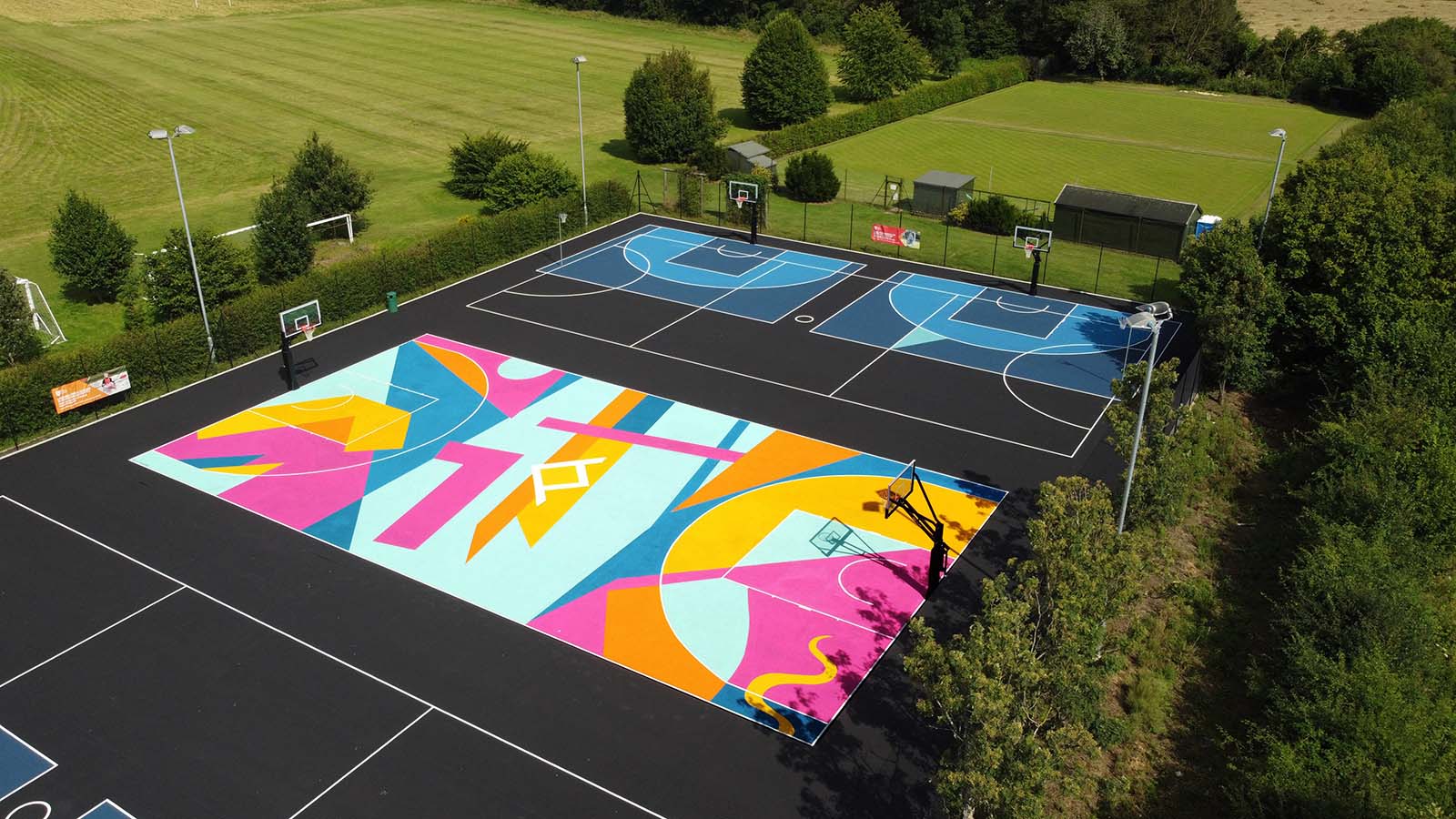
Court Dimensions and Space Constraints
When selecting basketball hoops for educational institutions, it’s essential to consider court dimensions and space constraints. Proper court sizing ensures a suitable playing area and adherence to regulations. While this section will provide a brief overview, for detailed information on court sizes for optimal gameplay, refer to basketball court sizes and dimensions. Here are key points to consider:
a) Recommended Court Sizes: Different educational levels may have specific court size recommendations. Typically, schools may have smaller court dimensions compared to colleges and universities. It’s crucial to consult official regulations or sports governing bodies to determine the appropriate court sizes for your institution.
b) Outdoor vs. Indoor Considerations: The availability of outdoor or indoor space will influence the choice of basketball hoops. Outdoor courts often provide more freedom in terms of court dimensions, while indoor facilities may have specific space constraints that require careful planning and selection of suitable hoop sizes.
By considering court dimensions and space constraints, educational institutions can select basketball hoops that fit their available space and comply with the recommended court sizes. Ensure that you refer to the detailed post or official regulations for specific measurements and guidelines to create a well-designed and functional basketball court.
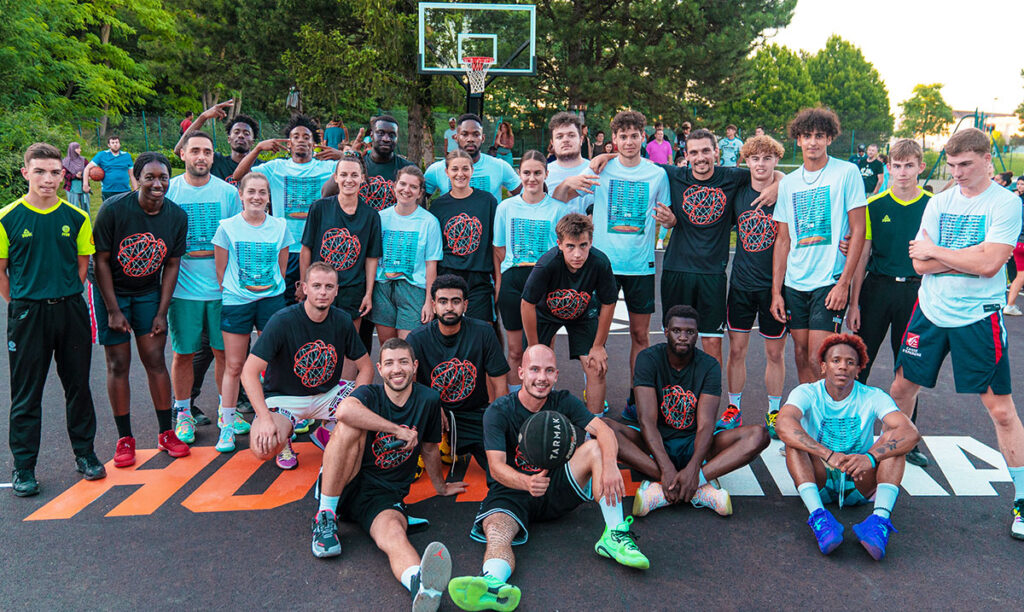
Durability and Weather Resistance
To ensure the longevity and performance of basketball hoops in educational institutions, durability and weather resistance are crucial factors to consider. Here are key aspects to focus on:
a) Material Quality: Select basketball hoops constructed with high-quality materials that can withstand frequent use and outdoor elements. Look for features such as powder-coated steel, which provides excellent durability and resistance to rust and corrosion. Robust materials ensure the hoops can endure the rigors of intense play and remain structurally sound over time.
b) Weather Resistance: If the basketball hoops will be installed outdoors, it’s essential to choose models specifically designed for outdoor use. These hoops should be resistant to various weather conditions, including rain, wind, and extreme temperatures. Weather-resistant features may include protective coatings, rust inhibitors, and materials that can withstand UV exposure.
c) Warranty: Check the warranty coverage provided by the manufacturer. A comprehensive warranty demonstrates confidence in the product’s durability and quality.
By considering durability and weather resistance, educational institutions can select basketball hoops that can withstand the demands of regular use, outdoor conditions, and the test of time. Prioritizing high-quality materials, weather-resistant features, and proper maintenance ensures a reliable and long-lasting basketball hoop solution for students to enjoy.
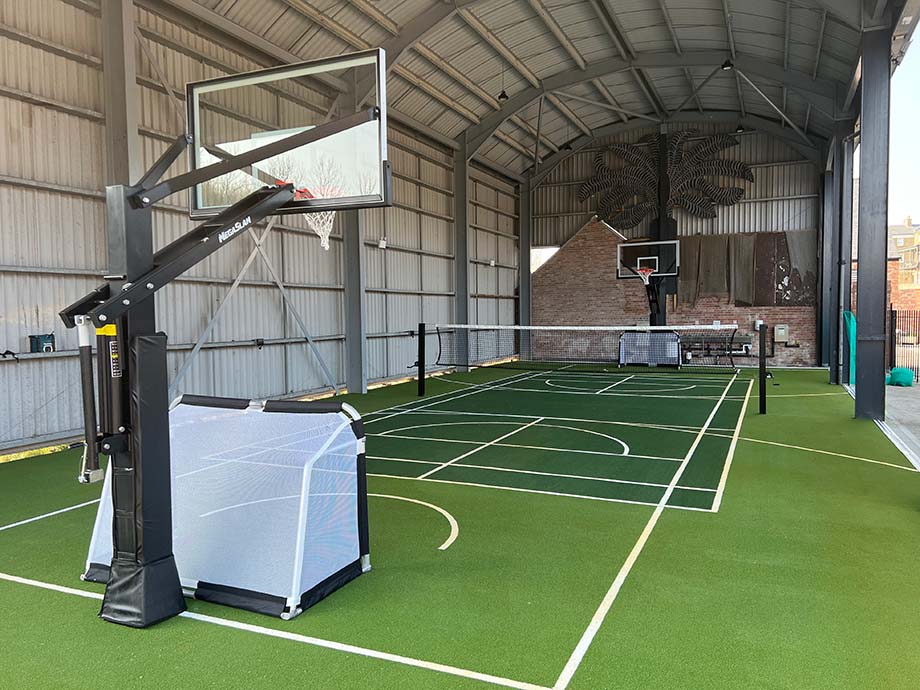
Cost and Budget Considerations
When choosing basketball hoops for educational institutions, it’s essential to balance quality and cost within the allocated budget. Here are some key considerations to help make informed decisions:
a) Quality vs. Price: While it can be tempting to prioritize cost savings, it’s crucial to consider the overall quality and durability of the basketball hoops. Investing in higher-quality hoops may initially require a larger budget but can save money in the long run by reducing maintenance, repairs, and replacement costs.
b) Total Cost of Ownership: Look beyond the initial purchase price and consider the total cost of ownership over the lifespan of the basketball hoops. This includes maintenance, repairs, potential upgrades, and any associated installation costs. Evaluate the long-term value and durability of the hoops to make cost-effective decisions.
c) Competitive Pricing: Research and compare prices from different suppliers or manufacturers to ensure you’re getting competitive pricing for the desired quality and features. Request quotes and consider factors such as warranties, customer support, and additional services offered by the suppliers.
d) Budget Allocation: Allocate a realistic budget for basketball hoops based on the specific needs and priorities of the educational institution. Consider factors such as the number of hoops required, the quality and features desired, and any additional equipment or accessories needed for a complete setup.
e) Considerations for Cost Savings: Explore cost-saving options without compromising on quality. This may involve seeking volume discounts when purchasing multiple basketball hoops, taking advantage of seasonal sales or promotions, or considering refurbished or pre-owned options that still meet safety and performance standards. There are certainly things to consider Before You Buy a Cheap Basketball Hoop.
f) Long-Term Planning: Incorporate long-term planning into the budget considerations. Anticipate future needs and potential growth of the basketball program, which may require additional hoops or upgrades. Allocating funds for future expansions can help avoid unnecessary expenses in the future.
By carefully considering cost and budget factors, educational institutions can make informed decisions that balance affordability with the desired quality and features of basketball hoops. Striking the right balance ensures a cost-effective investment that meets the needs of the institution and promotes the long-term success of the basketball program.
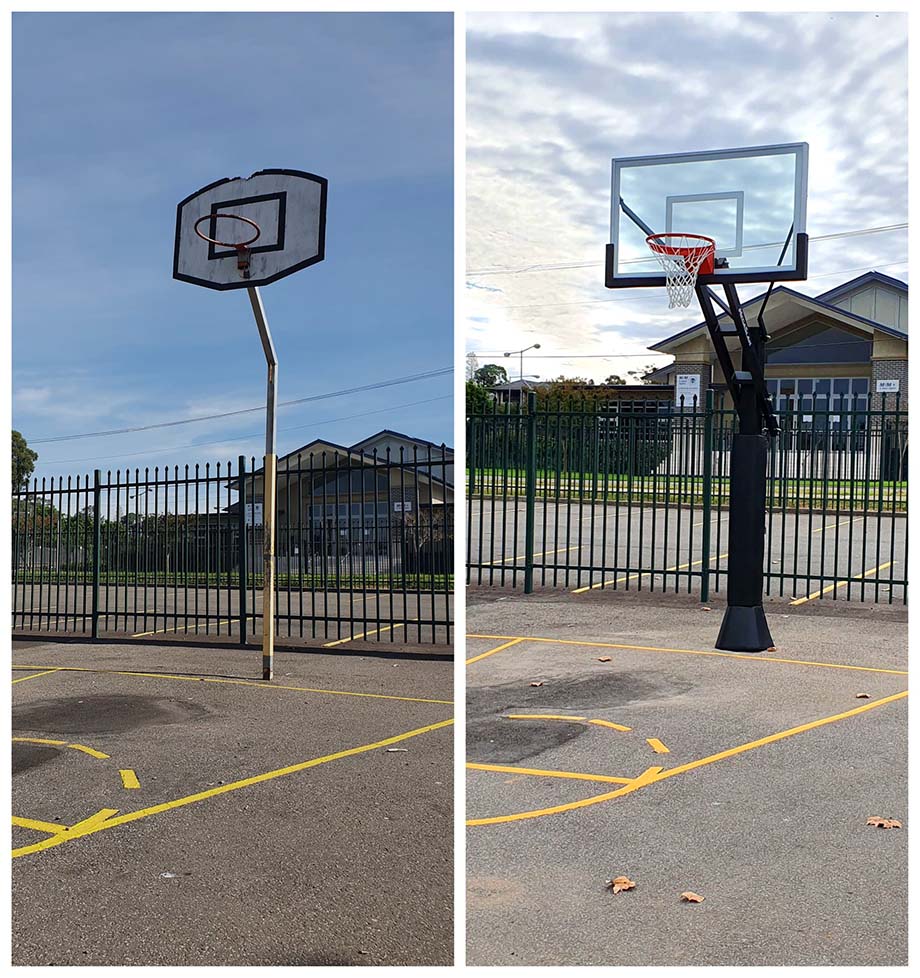
Installation and Assembly
Proper installation and assembly of basketball hoops are essential for safety, functionality, and optimal performance. Consider the following aspects when addressing the installation process:
a) DIY vs. Professional Installation: Evaluate whether the basketball hoop installation can be handled by in-house staff or if it requires professional assistance. Factors such as the complexity of the installation, available resources, and expertise should be taken into account. Complex installations or those involving specialized equipment may benefit from professional services to ensure accurate and secure installation.
b) Safety Guidelines: Establish clear safety guidelines for the installation process. This includes identifying potential hazards, such as overhead power lines, and ensuring proper safety precautions are followed. Use appropriate personal protective equipment (PPE) when handling heavy components or during elevated work.
c) Manufacturer’s Instructions: Adhere to the manufacturer’s instructions and guidelines for installation and assembly. This ensures that the basketball hoops are installed correctly, minimizing the risk of accidents and optimizing their performance. Familiarize yourself with the provided manuals and follow the step-by-step instructions carefully.
d) Site Preparation: Prepare the installation site in advance, ensuring it meets the necessary requirements for the chosen basketball hoop type. This may involve levelling the ground, ensuring adequate space, and verifying that the chosen location complies with regulations and safety standards. If the basketball court line markings are already in place, you’ll need to work relative to them. If you’re installing a new surface, such as modular sports tiles, be sure that the lines will match you hoop installation.
By following proper installation procedures, adhering to safety guidelines, and conducting regular maintenance, educational institutions can ensure the safe and effective use of basketball hoops. Properly installed and well-maintained hoops contribute to a positive sports experience and promote the overall success of basketball programs.
Conclusion
Investing in suitable basketball hoops for educational institutions across Europe is a significant decision. By considering factors such as hoop type, safety features, court dimensions, durability, budget, and installation, you can make an informed choice that meets the specific needs of your school, college, or university. Remember to conduct thorough research, consult with experts, and prioritize the safety and enjoyment of students and athletes.
By doing so, you’ll be contributing to the growth of basketball programs in educational settings across Europe and beyond, a prime focus of everything we do at Oncourt.


